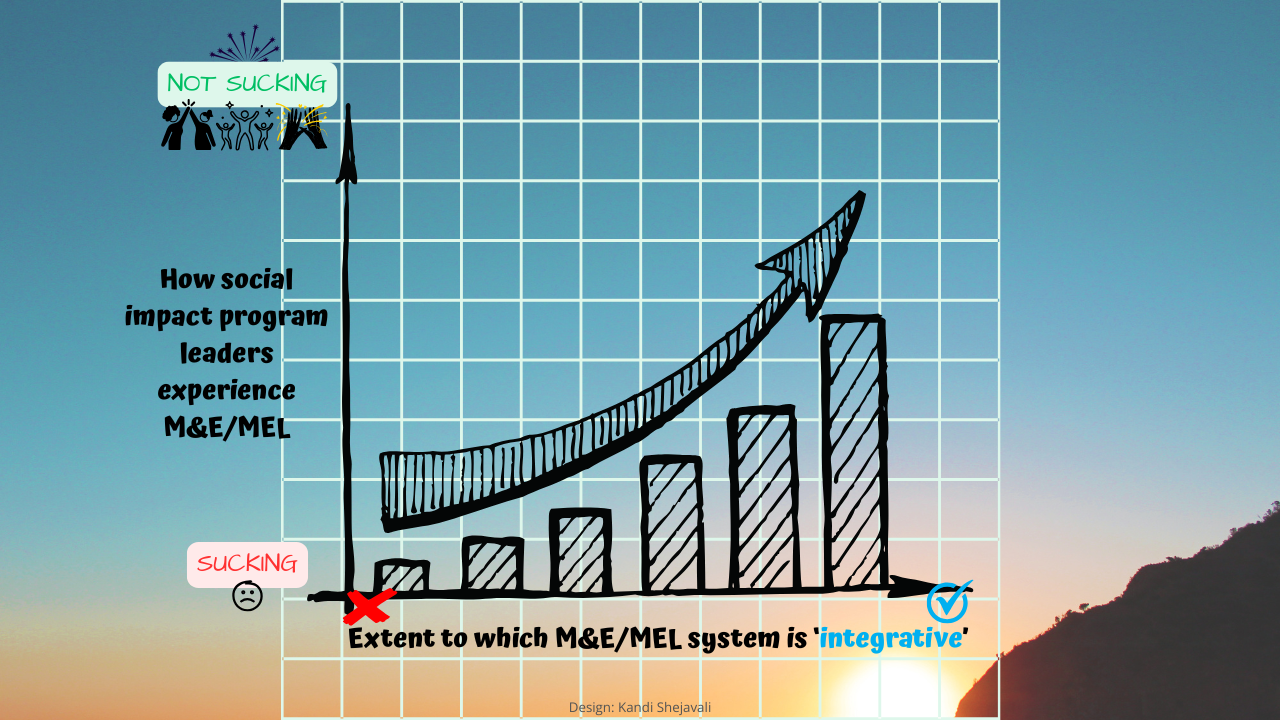Your project’s M&E system should always be articulated in two separate documents: here’s why
Nov 08, 2021
One is fun but…
A project’s monitoring and evaluation (M&E) system is often articulated in a single document called the M&E Plan.
Meant to be used in conjunction with other management tools (such as work plans, procurement plans, and financial plans), the M&E Plan can be considered a tool to plan and manage the process of monitoring, evaluating, and reporting the project’s progress.
[RESOURCE: If you could use a short introductory guide to M&E fundamentals, download the Basics of M&E: A cheat sheet for beginners.]
A comprehensive M&E Plan includes an explanation of the objectives of the M&E system, a description of the essential principles that will guide the activities undertaken to achieve those objectives, and a description of those activities – i.e., what will be measured, and how – which should be tightly aligned with the project’s theory of change (ToC) and implementation modalities. The M&E Plan should also include other details such as the M&E system’s management arrangements, budget, and the plan for reviewing and updating the ToC (ideally based on ongoing testing of the results hypothesis) and the Plan itself.
As such, the M&E Plan contains plenty of helpful information.
But is that enough to fully articulate the project’s M&E system?
My answer is an emphatic ‘no’ (basically the same response I’d give if someone asked me “is that enough?” after placing only a single scoop of delicious food on my plate while there was more than enough left in the serving plate for everyone…I mean, come on).

I contend that a project’s M&E system is best articulated in two separate documents.
Why two separate documents to articulate a project’s M&E system?
The reason for articulating the project’s M&E system in two separate documents is simple: as a strategic document, the M&E Plan can only go so far into the granular details of how M&E for the project should be done.
The detailed ‘how-to’ is more appropriately laid out elsewhere. The separate document – let’s call it the M&E Manual (its name doesn’t matter as much as its content) – should ideally offer step-by-step instructions on how to plan for, generate, report on, and use M&E evidence.
Going into nitty-gritty detail, the M&E Manual serves as a handy reference guide for the project team, ensuring that everyone is on the same page about how M&E should be done. This will, in turn, ensure overall consistency and cohesion in the system, help assure the quality of M&E system-generated data, and, ultimately, increase the likelihood that the M&E system will fulfil its role of maximizing positive results for the people and part of the planet that the project is meant to serve.
The division of labor between the M&E Plan and the M&E Manual
Essentially, the M&E Plan articulates the M&E system at a conceptual level while the M&E Manual focuses on the practical activities that serve to operationalize that system.

Consider it a double-tier cake made up of two distinct but deliciously linked layers:
- the conceptual layer; and
- the practical layer.
Layer 1: the M&E Plan, a healthy serving of concepts
The first layer, the conceptual framework represented by the M&E Plan, structures what will be measured and tracked to determine the extent to which the project is achieving its objectives and the overall impact that the project is having on the population that it intends to affect. It serves as the foundation on which the system is built, encompassing its objectives, the principles that will guide the activities undertaken to achieve those objectives, and a high-level understanding of what those activities are, including the indicators that are to be reported and the targets they are to be reported against.
Thus, the M&E Plan gives affected populations, donors, and other stakeholders a solid understanding of what the project will measure and track in order to determine the extent to which it is achieving its intended results.
The M&E Plan should be reviewed annually and updated when necessary.
Layer 2: the M&E Manual, a generous sprinkling of results measurement advice
The second layer concerns the practical process of monitoring, evaluating, and reporting the project’s process, i.e., the day-to-day activities that operationalize the M&E system.
Specifically, the M&E Manual lays out in step-by-step detail how the M&E activities are to be carried out. Along with the step-by-step instructions and related schedules, roles, and responsibilities, the Manual should include the templates used in the process, the purpose of each template, and when, by whom, and how they should be used. The project team can refer to the Manual as and when the need arises in the process of planning, producing, reporting on, reviewing, and using results information.
The Manual can be updated on an ongoing basis, as needed.
In sum: two really is better than one
It may seem convenient to articulate your project’s M&E system in a single document, the M&E Plan.
But a project’s M&E system is best articulated in two separate documents:
- one that articulates all the conceptual elements that ground the M&E system and are not likely to change frequently over the life of the project (though they should be reviewed at least annually); and
- another that stands alone as a practical reference guide.
Taken together, the M&E Plan and the M&E Manual comprehensively lay out what will be measured, and how, to maximize the project’s potential to deliver positive social and environmental results.
Over to you!
PRACTICAL TIP #1: If you work on a project aiming to help generate positive social and/or environmental impact, take a look at the documents that articulate the project’s M&E system. To what extent to they represent the conceptual aspects of the system, on the one hand, and the practical aspects, on the other? List the documents that fall under each category.
PRACTICAL TIP #2: If you think it would be helpful, share and discuss your list with your project team to determine whether reframing the documents into an M&E Plan and a separate M&E Manual would strengthen the project’s result measurement and management system (by, for example, ensuring a greater degree of overall cohesion and consistency to help assure the quality of M&E system-generated data). Document the team’s conclusion.
PRACTICAL TIP #3: Write out the action steps, if relevant, to carry out the conclusion reached by the team (under tip #2 above). Be sure to include the action ‘owners’ and timelines, so that schedules, roles, and responsibilities are clear – and don’t forget to jot down the core reason.
Please share your experience by commenting or leaving an emoticon reaction at the bottom of this LinkedIn post.
(Main blog post image credit: Possessed Photography on Unsplash)





